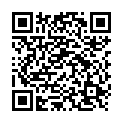|
|
|
| Module code: E520 |
|
2V+1P (3 hours per week) |
|
3 |
| Semester: 5 |
| Mandatory course: yes |
Language of instruction:
German |
Assessment:
Written examination
[updated 12.03.2010]
|
E520 Electrical Engineering, Bachelor, ASPO 01.10.2005
, semester 5, mandatory course
|
45 class hours (= 33.75 clock hours) over a 15-week period.
The total student study time is 90 hours (equivalent to 3 ECTS credits).
There are therefore 56.25 hours available for class preparation and follow-up work and exam preparation.
|
Recommended prerequisites (modules):
E402 Electronics II
[updated 12.03.2010]
|
Recommended as prerequisite for:
|
Module coordinator:
Prof. Dr. Volker Schmitt |
Lecturer:
Prof. Dr. Volker Schmitt
[updated 12.03.2010]
|
Learning outcomes:
Students will learn how to analyse and design circuits by simulating both analogue and digital circuits and systems using the integrated design interface PSPICE. They will also learn how to customize the PSPICE tools to satisfy problem-specific requirements.
[updated 12.03.2010]
|
Module content:
- Fundamentals of system and circuit design, detailed technical proposals,
specifications, design level and display modes, bottom-up and top-down methods
- Introduction to PSPICE, tools in the integrated design environment PSPICE,
schematic editor, graphical interface, stimulus editor, parameter extractor,
data types, netlists, analysis types
- Analogue network elements, models, subcircuits, analogue behaviour modelling,
macro modelling
- Simulator commands, simulator settings
- Digital circuit elements, digital behaviour modelling
- Simulating mixed digital/analogue circuits, interfaces between analogue and
digital circuit elements
- Lab work: Simulation of analogue, digital and mixed networks
[updated 12.03.2010]
|
Teaching methods/Media:
Overhead transparencies, handouts, PC and video projector
[updated 12.03.2010]
|
Recommended or required reading:
HEINEMANN, R.: Pspice; Hanser-Verlag; ISBN 3-446-21656-1
Leibner, P.: Rechnergestützter Schaltungsentwurf; Krehl, Münster, 1996
PSPICE A/D Reference Manual
PSPICE A/D & Basics+ Userís Guide
PSPICE Schematics Userís Guide
[updated 12.03.2010]
|


